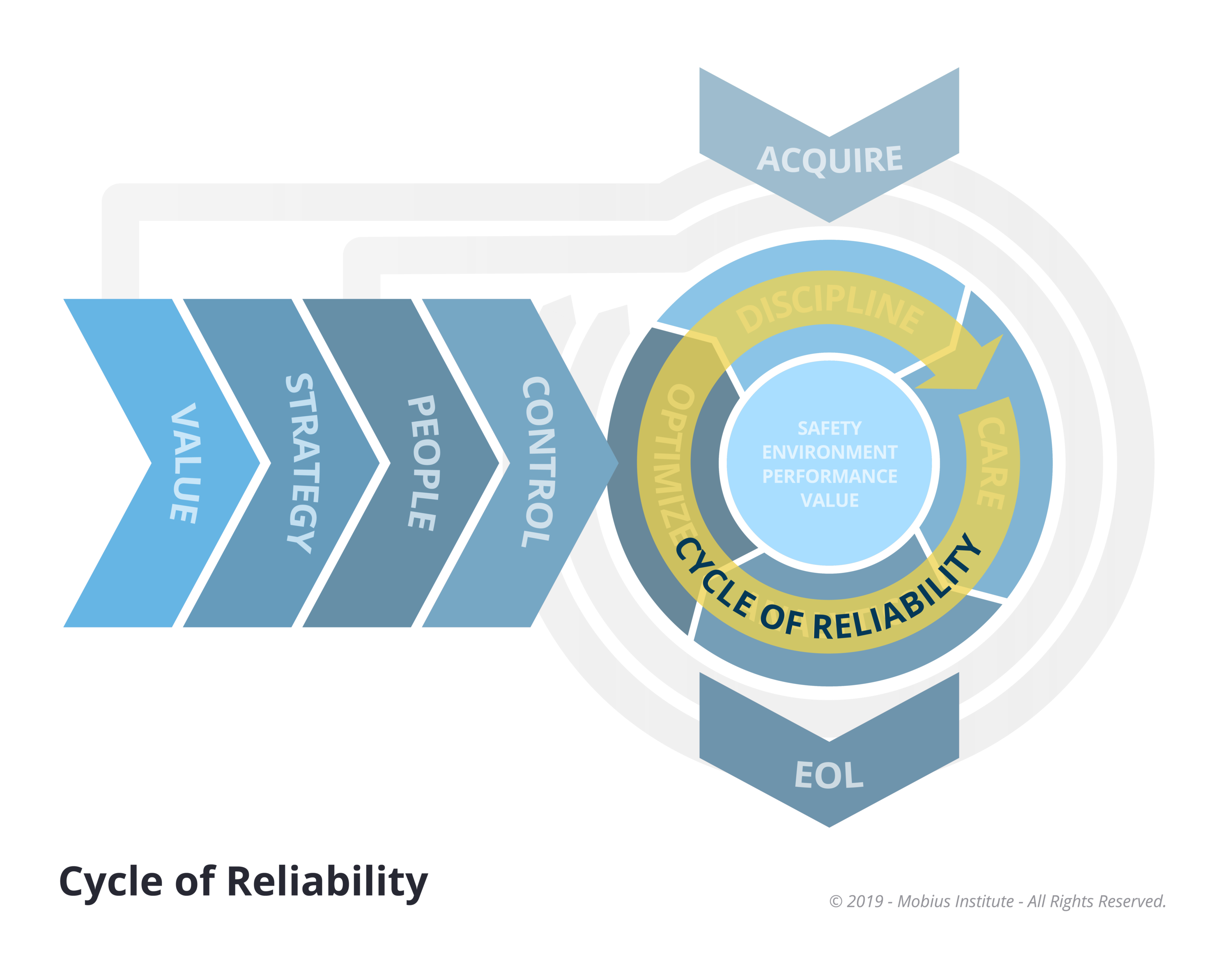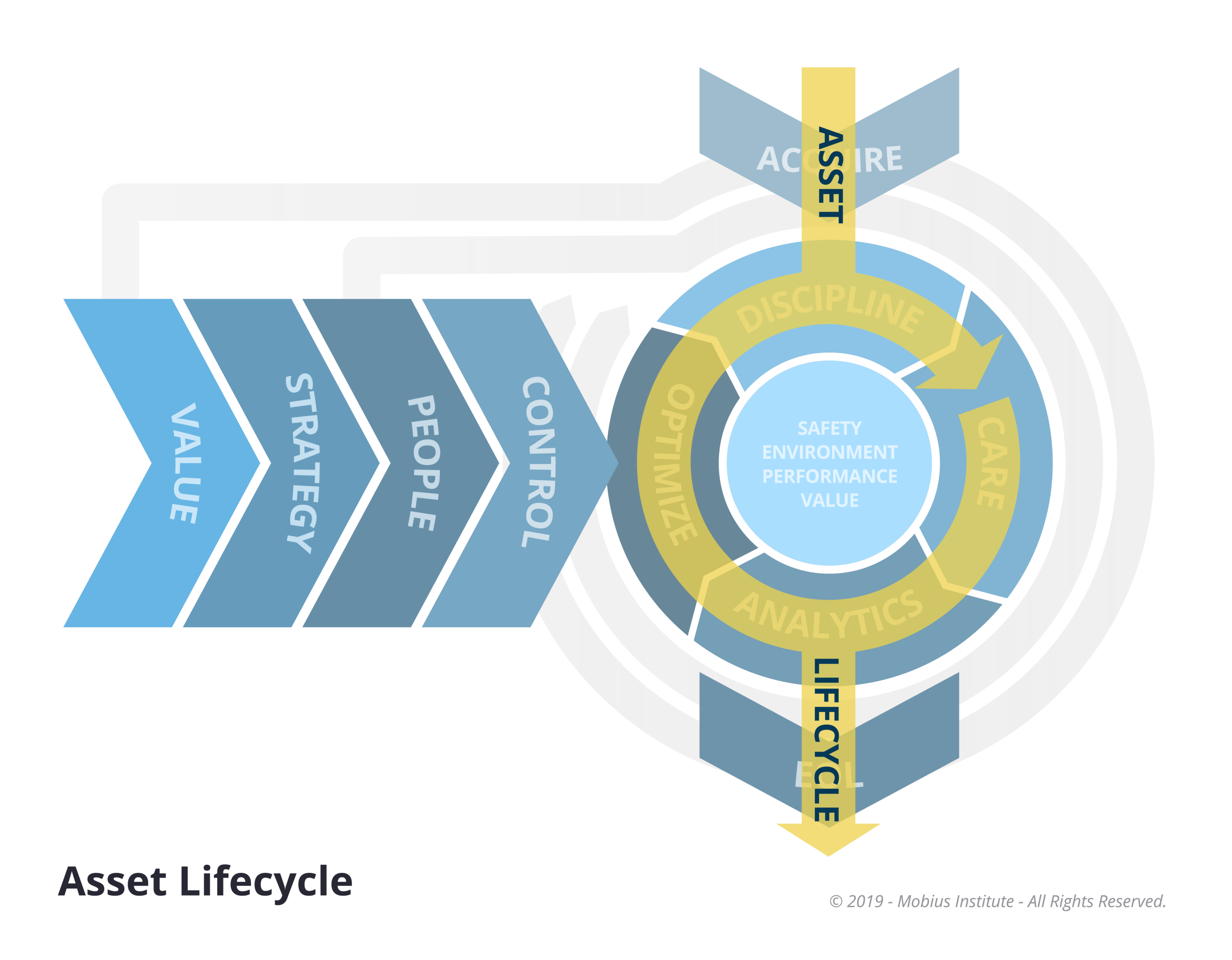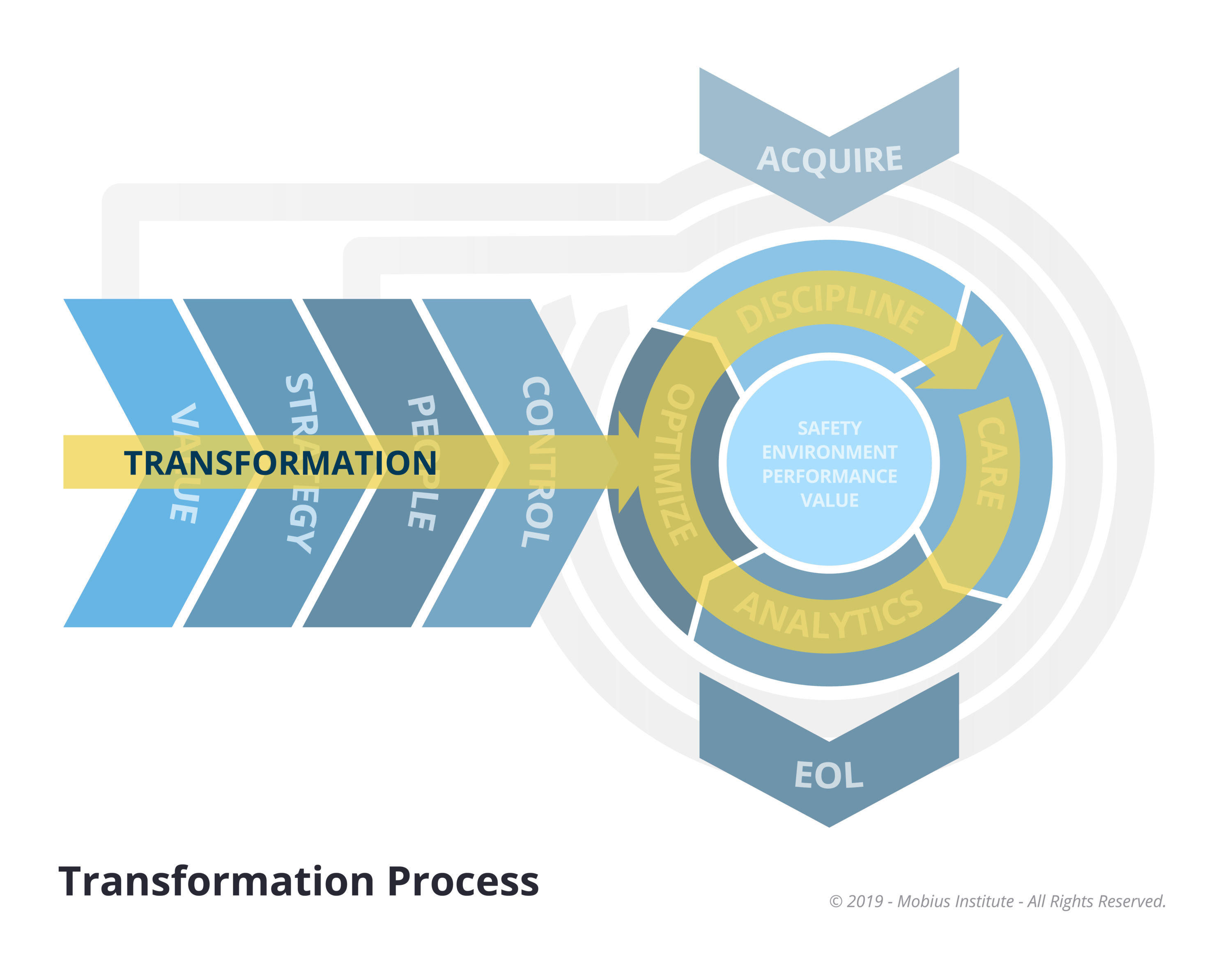A Detailed Overview of the ART Process
The ART process will make your life as a Reliability Program Leader so much easier. This is a structured process that will help you avoid the traps and hassles that frustrate so many people.
Let’s take a look at the seven core phases of a successful implementation: the three foundational elements required to establish the program and the four cyclic principles required to sustain the program.
What you are about to see is probably quite different from what you might have read elsewhere. Within the details will be all the elements you should be familiar with if you have studied reliability at all: risk management, criticality analysis, RCA, RCM, FMEA, PMO, CBM, planning and scheduling, precision lubrication, and so on. But if you just dive in and attempt to be “world-class” with each of those individual elements, you will fail. As mentioned in the introduction, the vast majority of programs fail when all they do is seek to be successful with each of the elements.
You need to know what to do, how to do it, and when to do it.
Here is the simplified Asset Reliability Transformation® (ART) guide.
If you have never seen it before, you probably have a lot of questions swirling around in your mind. And that is why we have provided this guide. So, let us start with a very brief summary.
A quick summary of ART
The ART diagram is meant to represent the timeline, starting from the left and working to the right. In this simplified version:
- We start by establishing the VALUE of the program. We review the needs of the business, assess the current state, begin pilot projects to prove the effectiveness, establish the business case, and gain senior management support.
- Understanding the goals and targets of the program, we can develop the appropriate implementation and asset STRATEGY.
- Then we can bring the PEOPLE on board and focus on leadership, roles and responsibilities, buy-in, training, certification, and skills. We also maximize the engagement and contribution of the entire workforce.
Once we have the foundation in place, we move into the ongoing “cycle of reliability.”
- We behave with DISCIPLINE. There should be one way to do everything, and everyone does it that way. We establish standards, workflows, and procedures, and we implement effective work and spares management.
- We take CARE of our assets by following operational procedures and lubricating, cleaning, adjusting, and calibrating our equipment.
- We utilize data ANALYTICS to make data-driven decisions by monitoring the health and performance of our assets, utilizing KPIs, and analyzing failure data.
- We learn from the data and observations to OPTIMIZE our implementation and asset strategy.
Let’s dig a little deeper
Now we will need to make the diagram a little more complicated.
This is what we added:
- In most cases, it is necessary to regain CONTROL of maintenance before we can truly begin the cycle of reliability. We must “break out of the reactive maintenance cycle of doom.”
- When we ACQUIRE the assets, and work with contractors and service providers, we must consider project management, design, and purchasing practices in order to achieve the lowest total cost of ownership. And we must perform acceptance testing to avoid importing trouble into our facility.
- And when the asset comes to the end of its life (EOL), or we experience undesirable “incidents,” we must take steps to learn from the incident and make improvements to avoid future failures.
We have not yet mentioned safety, performance, and the environment. They are not separate stages in our implementation process; they are the ultimate goals of the program. We must minimize the number of SAFETY and ENVIRONMENTAL incidents, and we must maximize the PERFORMANCE of the plant. Our goal is to maximize the VALUE delivered by our assets.
Implementation life versus asset life
There is another way we can look at the Asset Reliability Transformation process.
The cycle of reliability
First, we have the CYCLE OF RELIABILITY. Our goal is to maximize reliability and performance in this cycle. We do everything the right way, we care for the assets, we utilize data to make better decisions, and we optimize everything we do.
The asset lifecycle
Next, we have the ASSET LIFECYCLE. We do everything necessary to make optimal design and purchase decisions (with QA/QC in case our process fails). The new assets (and spares and material, and overhauled/repaired equipment) enter into the cycle of reliability where we maximize their life, but when they eventually fail, they exit via our EOL (End of Life) process where we determine if changes are possible to further extend the asset life in an economically viable manner.
The transformation timeline
And last, but certainly not least, we have the reliability (and performance) transformation process. We establish the business case, gain support, develop the strategy, get the people on-side, and overcome the “reactive maintenance cycle of doom” so that we may enter the cycle of reliability.
How can I learn more?
At this time, the only way to follow the ART process is to request your free ART posters, and take the ARP-A “Reliability Advocate” training to get an overview, the ARP-E “Reliability Engineer” course to understand the detailed technical requirements, and the ARP-L “Reliability Program Leader” course to understand the entire implementation process.
You can attend public courses, experts can come to your site and deliver training to your team, you can take virtual courses, perhaps with your teams from multiple sites, or you can watch the distance learning video-based online courses.
But soon there will be detailed training on every phase, step, and recommended practice. Please contact Mobius Institute so that you can be notified when it is available.




